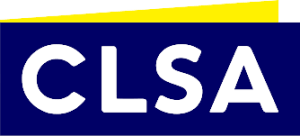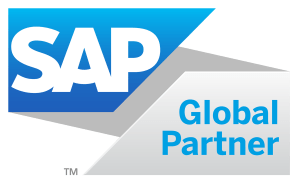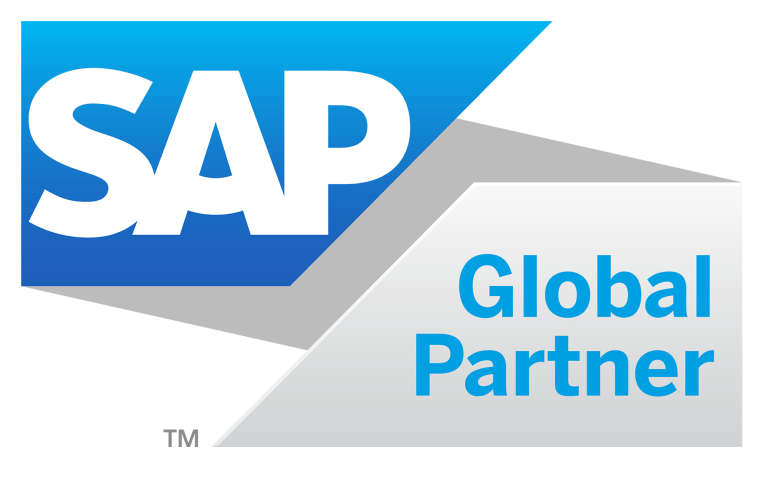Success stories

Deployed SAP Analytics Cloud for Planning, Analysis, and Reporting
Manila Water Company, a publicly listed company, holds the exclusive right to provide water and used water services to over seven million people in the Manila Water Concession, particularly the East Zone of Metro Manila and Rizal Province consisting of 23 cities and municipalities. The Company has been significantly improving its water and used water services by expanding its distribution lines and eliminating system losses in its coverage areas, resulting in increased water availability. It also provides sewerage and sanitation services.
As part of Manila Water Company’s digitalization, a transformation journey from Excel-based planning to SAP Analytics Cloud – a new generation tool from SAP for automation of Planning, Analysis, and Reporting.
The collaboration between Manila Water and SAP Analytics Cloud represents a comprehensive and forward-thinking approach to overcoming challenges. By leveraging cutting-edge analytics tools SAP Analytics Cloud is well-positioned to optimize its operations, enhance efficiency, and continue its journey toward sustained success in the water management sector.
Challenges
Complex Scenario Modelling: Creating and analyzing complex scenarios for revenue, expenses, and COGS projections can be challenging.
Real-time workforce Insights: Traditional workforce planning may rely on static reports, leading to a lack of real-time insights into staffing, resource allocation data collaboration, and managing the large volume of Excel sheets.
Data Integration: Gathering data from multiple sources and integrating it for Revenue, Opex, COGS, Mancost, P&L, Balance sheet, and Cash flow planning and accurate projections can be time-consuming and cumbersome activity across the organization, especially during planning periods along with regular activities.
User Adoption: Users may face challenges in adopting new tools and technologies, leading to underutilization of the integrated platform.
Data Volume and Performance: Large volumes of data can impact the performance of reporting tools, leading to slow response times.
Scalability Issues: As the volume of data increases, Excel may struggle to handle large datasets efficiently, leading to performance issues and slower consolidation processes.
Solution Implemented: SAP Analytics Cloud
- Budgeting and Forecasting scenarios implemented for Revenue, Opex, COGS, and P&L statements.
- Workforce Automation Planning
- Balance sheet and Cashflow Budgeting
- Integration with SuccessFactors
- Live Reporting and Dashboards
- Actual data flow from SAP Success Factors, SAP ERP system for Plan, Actual Comparison statement
- Delivered 45+ Input Templates, and 235 reports including KPIs, Comparisons, and Dash Boards for Middle and Senior management.
Project Highlights:
- End to End Integrated Planning Automation
- Implemented Phase-1 and Phase-2 in less than 6 months.
- Delivery Mode: Onsite and Offshore
- Deployed on Time
- 100% of system Usage across business departments
Achievements:
The adoption of SAP Analytics Cloud at Manila Water exemplifies the transformative potential of contemporary analytics solutions. By dismantling data silos, providing real-time insights, and fostering a culture of data-driven decision-making, SAC has empowered the company to navigate a rapidly evolving business landscape with unparalleled agility and precision. narrative underscores how SAP Analytics Cloud serves as a potent catalyst for achieving data-driven excellence within the intricate framework of a multinational organization like Manila Water.
In the ever-evolving landscape of financial planning, embracing technological advancements is paramount. Our journey from Excel to SAP Analytics Cloud reflects not only a response to challenges but also a commitment to enhancing our planning processes. As businesses continue to seek efficiency and accuracy, the right tools, such as SAP Analytics Cloud, can pave the way for transformative success.


Leveraging S/4 HANA Group Reporting for Legal and Management Consolidation
Globe Telecom, Inc., commonly shortened as Globe, listed in the Philippine stock exchange is a major provider of telecommunications services in the Philippines covering more than 3000 locations all over the country. The company operates the largest mobile network in the Philippines and one of the largest fixed-line and broadband networks.
As a part of Globe Telecom’s digitalization efforts, the company has embarked on a transformative journey by utilizing S/4HANA Group Reporting for the statutory and management consolidation of its financial data. This initiative is specifically designed to comprehensively tackle and overcome existing challenges.
Challenges
Global Compliance: Navigating complex international regulatory requirements and ensuring compliance with diverse accounting standards requirements.
Inter-Company Transactions: Managing and reconciling intercompany transactions accurately across the entities within the Group.
Divergent Accounting Methods: Managing two distinct accounting methods (purchase method and equity method) for different investments.
Data Integration: With multiple versions and currencies, maintaining accurate and reliable data becomes critical. Any errors in data input or calculation can result in inaccuracies in the consolidated financials.
Data Collection: Aggregating data from different Entities, and profit centers with varying systems and data formats can be complex. Integrating diverse data sources for comprehensive reporting requires effective data management and integration strategies.
Solution Implemented: S/4 HANA Group Reporting
- Legal and Management Consolidation
- Multi Version, Multi Group, and Multi-Currency Consolidation
- Automation of Intercompany eliminations
- Consolidation of Investments – Purchase & Equity Method
- Activity Based Consolidation to Automate monthly NCI and OCI portions.
- Accounting for intercompany dividend
- Legal and Management Reporting for Pre and post-consolidated financial statements
- Year-to-date and Periodic Consolidated Cash Flow Statement
Project Highlights:
- Deployed Phase-1 and Phase-2 in less than 6 months.
- Delivery Mode: Onsite and Offshore
- Deployed on Time
- 100% of system Usage across business departments
Achievements:
The integration of S/4 HANA Group Reporting at Globe Telecom serves as a compelling illustration of the transformative power inherent in modern analytics solutions making Legal and management consolidation.
Real-Time consolidation makes a single version of the truth and allows organizations to monitor their financial data in real-time for both legal and management reporting.
One system for Local and Group Close activities along with reconciliation of intercompany balances.
Automated currency conversion based on Group currency concerning movements in account balances.
Handy Group level consolidated reports with drill down to entity level GL account balances with enhanced collaboration within S/4 HANA Group Reporting.


Leveraging S/4 HANA Group Reporting for Legal and Management Consolidation
Ultra Clean Holdings, Inc. is a leading developer and supplier of critical subsystems, components, and parts, and ultra-high purity cleaning and analytical services primarily for the semiconductor industry. Under its Products Division, UCT offers its customers an integrated outsourced solution for major subassemblies, improved design-to-delivery cycle times, design for manufacturability, prototyping, advanced flow control solutions, and high-precision manufacturing. Under its Services Division, UCT offers its customers tool chamber parts cleaning and coating, as well as micro-contamination analytical services. Ultra Clean is headquartered in Hayward, California.
UCT embarked on a strategic transformation, capitalizing on the capabilities of S/4 HANA Group Reporting to systematically address and overcome existing challenges with a comprehensive approach.
Challenges
Global Compliance Mastery: Navigating intricate international regulatory requirements and diverse accounting standards.
Scalability and Efficiency Mastery: Adapting to organizational growth while ensuring efficient consolidation processes across different regions with entities following different accounting standards.
Inter-Company Transaction Finesse: Managing and reconciling intercompany transactions with precision is always troublesome for business users especially when huge volumes spread across different countries involving different transaction currencies. Managing intercompany transactions and eliminations in Excel can be cumbersome, especially when dealing with many entities and intricate intercompany relationships.
Data Collection: Aggregating data from different Entities, and profit centers with varying systems and data formats can be complex. Integrating diverse data sources for comprehensive reporting requires effective data management and integration strategies.
Harmonizing Divergent Accounting Methods: Managing two distinct accounting methods (purchase and equity) for different investments based on holding percentage and automation of postings related to non-controlling interest and other comprehensive income from both the Group and subsidiary point of view.
Limited Scalability: As the size and complexity of the organization grows, Excel may struggle to handle large volumes of data leading to performance issues. Handling multiple entities, currencies, and intricate consolidation rules becomes more challenging in Excel as compared to specialized consolidation tools.
Data Integrity and Security: Ensuring data integrity in Excel can be challenging, and there’s a risk of accidental or intentional data manipulation. Excel files are often shared via email or stored on local drives, making it difficult to control access and maintain data security.
Solution Implemented: S/4 HANA Group Reporting
- Legal and Management Consolidation
- Multi Version, Multi Group, and Multi-Currency Consolidation
- Automation of Intercompany eliminations – Trade, Non-Trade, and B/S transactions
- Consolidation of Investments – Purchase & Equity Method
- Activity Based Consolidation to Automate monthly NCI and OCI portions.
- Legal and Management Reporting for Pre and post-consolidated financial statements
- Year-to-date and Periodic Consolidated Cash Flow Statement
Project Highlights:
- Automation of Legal & Management Consolidation
- On-time Delivery with High-Insights Offshore Delivery Model
- Project Duration: 5 Months
Achievements:
Compliance with Accounting Standards: Ensured compliance with accounting standards and regulatory requirements relevant to investment banking, and provided transparency and accountability in financial reporting.
Time Efficiency: Automation of the consolidation process saved time compared to manual methods, allowing finance teams to focus on analysis and decision-making rather than spending excessive time on data collection and reconciliation.
Adherence to Quality Standards: S/4 HANA Group Reporting supported quality management by providing tools to monitor and ensure adherence to stringent quality standards of its industry.
Access Control: Implement strict access controls to restrict system access based on the principle of least privilege. Users should only have access to the functionalities and data necessary for their specific roles.
Data Integrity and Validation: Data validation checks are implemented for UCT to ensure the integrity of the financial data being consolidated. This includes validating currency conversions, eliminations, and other consolidation processes.
Documentation and Trial: Maintained detailed documentation of the consolidation process, including consolidation rules, mappings, and any manual adjustments made. This documentation should be readily available for audit purposes.
Statutory / Management and Tax Reporting: Financial and Non-financial reporting are now available from a single source – Group Reporting based on consolidated data.


Deployed SEM-BCS on HANA for Legal & Management Consolidation
Asia Pacific Resources International Limited, More known as APRIL Group is one of the largest, most technologically advanced, and efficient makers of pulp and paper products in the world. Products that are used by millions of people every day in liquid packaging, printing, and writing paper, tissues, shopping bags, food packaging, magazines, and books.
APRIL Group serves over 300 companies across a diverse range of industries with a special focus on commodities including palm oil, pulp and paper, oil and gas, viscose fiber, and specialty cellulose. Averis, the IT wing of the Group, provides its customers with highly scalable and cost-effective business services, from back-office operations to business support solutions.
As part of One SAP Implementation Program, current SAP SEM BCS consolidation systems are migrated into one system and merge all Subgroups and Main Group consolidation into a single system using the SAP consolidation tool – Strategic Enterprise Management Business Consolidation System (SEM BCS).
Challenges
Global Compliance Mastery: Navigating intricate international regulatory requirements and diverse accounting standards.
Scalability and Efficiency Mastery: Adapting to organizational growth while ensuring efficient consolidation processes across different regions with entities following different accounting standards.
Efficiency and Streamlining: There were redundancy data silos and operational efficiency issues. Difficulties in streamlining the consolidation process.
Inter-Company Transaction Finesse: Managing and reconciling intercompany transactions with precision is always troublesome for business users especially when huge volumes spread across different countries involving different transaction currencies. Managing intercompany transactions and eliminations in Excel can be cumbersome, especially when dealing with many entities and intricate intercompany relationships.
Harmonizing Divergent Accounting Methods: Managing two distinct accounting methods (purchase and equity) for different investments based on holding percentage and automation of postings related to non-controlling interest and other comprehensive income from both the Group and subsidiary point of view.
Limited Scalability:
As the size and complexity of the organization grows, Excel may struggle to handle large volumes of data leading to performance issues. Handling multiple entities, currencies, and intricate consolidation rules becomes more challenging in Excel as compared to specialized consolidation tools.
Solution Implemented: SEM BCS on HANA
- Migration from Multiple SEM BCS systems to OneSAP System
- Legal and Management Consolidation
- Multi Version, Multi Group, and Multi-Currency Consolidation
- Automation of Intercompany eliminations – P&L and BS transactions
- Consolidation of Investments – Purchase & Equity Method
- Activity Based Consolidation to Automate monthly NCI and OCI portions.
- Legal and Management Reporting for Pre and post-consolidated financial statements
- Year-to-date and Periodic Consolidated Cash Flow statement using Analysis for Office and Business warehouse.
Project Highlights:
- Migration of multiple SEM BCS systems to ONE BCS on Hana System.
- Statutory and management consolidation as per Local GAAP.
- Multi-consolidation areas in a single system to suit the business requirements across the group.
- Automation of intercompany eliminations including Trade and Non-Trade.
- Automation of consolidation of Investments – Activity-based Consolidation.
- Consolidated and entity-level local reports – using Analysis for office.
Achievements:
Data Load Automation: Data load from multiple Source SAP and Non-SAP systems using Standard data load and flexible upload for non-SAP companies using BW Data store and transformation capabilities.
Limited Scalability: As the size and complexity of the organization grow, Excel may struggle to handle large volumes of data leading to performance issues. Handling multiple entities, currencies, and intricate consolidation rules becomes more challenging in Excel as compared to specialized consolidation tools.
Consolidation of Investments: Automation of first and subsequent consolidation including postings of non-controlling interest and other comprehensive income based on holding percentage using the group share method.
Reporting: With the Implementation of SEM BCS on HANA, both standalone and consolidated reports are automated and available with a single source of truth across the entities and groups.
Global Compliance Reporting: Navigating intricate international regulatory requirements and diverse accounting standards.


Transformation from Excel Based Consolidation to SEM BCS on HANA
CLSA, formerly known as Credit Lyonnais Securities Asia, is a leading investment bank and brokerage firm with a significant presence in the Asia-Pacific region. CLSA is known for its strong focus on the Asia-Pacific region, providing investment banking services primarily in Asian markets. CLSA offers a range of investment banking services, including mergers and acquisitions (M&A), capital raising, equity and debt underwriting, and advisory services. CLSA has expertise in various sectors, including technology, healthcare, consumer goods, financial services, and energy.
Challenges
Data Integrity and Accuracy: Without a dedicated system, manual consolidation processes increase the risk of errors, inaccuracies, and inconsistencies in financial data, compromising the integrity of both statutory and management reports.
Difficulty in Segment-Based Reporting: Segment-based reporting requires a systematic approach to consolidating financial information from different business segments. Manual processes may struggle to provide accurate and timely segment-level insights.
Limited Analytical Insights: Manual consolidation may not provide the depth of analytical insights required for effective management decision-making, hindering strategic planning and performance analysis.
Consistency in Financial Reporting: The use of consistent and appropriate methods for consolidation ensures uniformity in financial reporting practices, which was indeed a challenging one.
This helps stakeholders, including investors and analysts, understand and analyze the semiconductor company’s financial performance accurately.
Excel-Based Consolidation: Consolidating data in Excel can sometimes be challenging, especially when dealing with large datasets or complex structures. Major concerns faced by CLSA are data inconsistency, duplicate data, linking external data and other worksheets, same data used differently, Performance issues, version control, and security concerns.
Solution Implemented: SEM BCS (Business Consolidations) on HANA
- Legal and Management Consolidation.
- Multi-Version, Multi Group, and Multi-Currency Consolidation.
- Automation of Intercompany eliminations.
- Segment-based management reporting.
- Consolidation of Investments – Purchase & Equity Method.
- Activity-Based Consolidation to Automate monthly NCI and OCI portions.
- Legal and Management Reporting for Pre and post-consolidated financial statements.
Project Highlights:
- SEM BCS Implementation for Statutory and Management Reporting.
- Delivery Mode: Onsite and Offshore.
- Deployed on Time.
- 100% of system Usage across business departments.
- Implementation in 7 Months including Subgroups.
Achievements


Transformation from Excel-based Planning to SAP Analytics Cloud
Advanz Pharma is a global pharmaceutical company that focuses on the development, manufacturing, and commercialization of specialty and niche pharmaceutical products. The company specializes in niche and specialty pharmaceutical products. Its portfolio includes a range of therapeutic areas, including endocrinology, critical care, urology, and more. Advanz Pharma focuses on providing solutions in areas where there may be limited treatment options or specific patient needs that are not addressed by mainstream pharmaceutical companies.
Challenges
Inefficient Planning Processes: SAC streamlines the budgeting and forecasting processes. The absence of such a tool led to inefficient planning processes, consuming more time and resources than necessary.
Manual and Time-Consuming Processes: workforce planning relies on manual methods, leading to time-consuming processes that are prone to errors and inefficiencies.
Data Latency: live reporting may be affected by data latency, as users rely on manually updated or batch-processed data. This can result in outdated information and hinder decision-making based on the most recent data.
Solution Implemented: SAP Analytics Cloud
- Automation of Revenue, Opex, COGS, Travel Cost, P&L and Mancost.
- Budgeting and forecasting for all planning scenarios.
- Employee-level Planning for all salary components.
- Integration between plan modules for seamless data flow within SAC.
- Scenario-level Driver-based planning.
- Upload of non-SAP data from non-S/4 HANA systems.
- Upload of Market data for reporting purposes.
Project Highlights
- First SAC Planning deployment in India for a Pharma Industry.
- Project delivered within 5 months for all planning scenarios.
- Users spread across different regions.
- Data Flow from S/4 HANA for Actuals and Excel files for Non S/4 HANA systems.
Achievements
Improved Decision-Making: The ability to analyze real-time data empowers decision-makers to make informed and timely decisions as this is crucial in a dynamic industry where quick responses to market changes and regulatory requirements are essential.
Adherence to Quality Standards: SAC supported quality management by providing tools to monitor and ensure adherence to stringent quality standards of its industry.
Centralized Business Intelligence: SAC served as a centralized platform for business intelligence, bringing together data from various sources. This promoted a holistic view of the organization’s performance.
Interactive Dashboards: SAC allowed the creation of interactive and visually appealing dashboards. Users can explore data dynamically, apply filters and apply filters, drill down into details, enhance the user experience, and support data-driven decision-making.
Unified Analytics Platform: SAP Analytics Cloud provided a unified platform for business intelligence, planning, and predictive analytics. This integration allowed them to access and analyze data from various sources within a single environment.
Continuous Innovation: As a cloud-based solution, SAC benefits from continuous updates and innovations provided by SAP, ensuring that organizations have access to the latest features and improvements.
Conclusion:
The implementation of SAP Analytics Cloud at Advanz Pharma stands as a testament to the transformative power of modern analytics solutions. By breaking down data silos, providing real-time insights, and fostering a culture of data-driven decision-making, SAC has empowered the company to navigate a rapidly evolving business landscape with agility and precision. This success story illustrates how SAP Analytics Cloud can be a catalyst for achieving data-driven excellence in a complex, multinational organization.


Transformation from Excel based Consolidation to SAP NetWeaver based Consolidation (SAP BPC)
Emirates Global Aluminium is the world’s largest premium aluminum producer and the largest industrial company in the United Arab Emirates outside oil and gas owned by Mubadala Investment Company of Abu Dhabi and Investment Corporation of Dubai. EGA is an aluminum conglomerate with interests in bauxite/alumina and primary aluminum smelting. It is also a member of the Gulf Aluminum Council (“GAC”), which represents, promotes and protects the interests of the aluminum industries within the Persian Gulf region.
Emirates Global Aluminium adopted an evolutionary turn with SAP Business Planning and Consolidation (BPC) to meet its business requirements.
Challenges
Complex and Manual Processes: The organization relies on complex and manual processes for financial consolidation, which can be time-consuming and error-prone.
Data Fragmentation and Inconsistency: Data for consolidation is stored in different systems, leading to fragmentation and inconsistencies in financial reporting.
Delayed Decision-making: The organization lacks real-time visibility into financial data, causing delays in the closing process and limiting timely decision-making.
Inefficient Planning and Budgeting: The planning and budgeting processes are disconnected from the consolidation process, leading to inefficiencies and potential discrepancies.
Limited Reporting and Analysis Capabilities: Existing systems provide limited capabilities for reporting and analysis, making it difficult for finance teams to generate.
Solution Implemented: SAP Analytics Cloud
- Legal and Management Consolidation.
- Multi-Version, Multi Group and Multi Currency Consolidation. Automation of Intercompany eliminations.
- Inventory elimination considering Actual data from Material ledger, Sales order processing along PO pricing conditions.
- Consolidation of Investments – Rule-based consolidation.
- Legal and Management Reporting for Pre and post-consolidated financial statements.
Project Highlights:
- Legal and Management Consolidation.
- Complex elimination process, fully customized solution
- Data extraction from Multiple SAP systems
- Project delivered in 9 Months.
- Automated Reconciliation report between management and Legal consolidation
- Standalone and consolidated reports available from single source of truth across the entities & Groups
Achievements:
Unified Platform: SAP BPC provided a unified platform for financial planning, budgeting, and consolidation. This integration reduced the need for multiple systems, promoting consistency and accuracy in financial processes.
Real-time Consolidation: SAP BPC was able to perform real-time consolidation which enabled the organization to close their financial books faster and gain immediate insights into their financial status.
Automation of Manual Processes: SAP BPC automated many manual consolidation tasks, reducing the risk of errors associated with manual data entry and calculations which enhanced efficiency and freed up finance teams for more strategic activities.
Improved Collaboration: SAP BPC facilitates collaboration among different departments and business units involved in the consolidation process. It enables the sharing of data, assumptions, and scenarios, fostering better communication and coordination.
Elimination of Profit on Inventory: Elimination of profit on closing inventory based on the actual cost of the supplying company by reading Sales order details, PO, Freight conditions and actual costing details based on Material ledger for consumption of materials. The logic builds to automate the entire end-to-end process of inventory elimination.
Conclusion:
The implementation of SAP business planning and consolidation (NW-BPC) is a testament to the transformative power of modern analytics solutions, a huge transformation from Excel-based complex consolidation to SAP NetWeaver-based Business planning and consolidation. By breaking down data silos, providing data insights, and fostering a culture of data-driven decision-making, SAP BPC has empowered the company to navigate a rapidly evolving business landscape with agility and precision. With this businesses is now able to close and submit their consolidations within 3 working days.


Transformations from excel based consolidation to SEM BCS
Philips is a Dutch multinational conglomerate with a diverse portfolio of products and services, primarily focused on healthcare, consumer lifestyle, and lighting. Philips is a major player in the healthcare industry, providing a wide range of products and solutions, including medical imaging equipment, patient monitoring systems, and healthcare informatics. Philips dived into SEM Business Consolidations (SEM-BCS) to automate their consolidation processes.
Challenges
Scalability Issues: Existing systems lack scalability, making it challenging to handle growing volumes of data and complex consolidation requirements.
Difficulty in Handling Intercompany Transactions: Managing intercompany transactions and eliminations manually is time-consuming and error-prone.
Adaptability to changing business conditions: Difficulty in adapting to changing business conditions and incorporating scenario planning.
Lack of Audit Trail and Transparency: Limited transparency in the consolidation process and difficulties in maintaining a clear audit trail.
Manual errors in Data Entry: Manual data entry processes are prone to errors, leading to inaccuracies in financial reporting.
Solution Implemented: SEM Business Consolidations (SEM-BCS)
- Statutory and Management Consolidation.
- Segment-based Management reporting.
- Automation of Intercompany Transactions.
- Data Load automation from multiple source systems.
- Consolidation of Investments- Purchase, Equity, and Proportionate methods.
- h SEM BCS across the products.
- Single consolidation system for Subgroups and Main Groups across the entities.
- BW reporting for standalone and Group reports.
Project Highlights:
- Data Integrity across the group.
- Fully automation of intercompany transactions.
- Intercompany reconciliation report.
- Segment reporting is made easy with SEM BCS across the products.
- Single consolidation system for Subgroups and Main Groups across the entities.
- BW reporting for standalone and Group reports.
Achievements:
Scalability: SEM BCS has made it scalable which was able to handle growing volumes of data and evolving consolidation requirements.
Intercompany Transaction Management: SEM BCS automated intercompany eliminations and ensured accurate handling of intercompany transactions. This helped the organization manage complex intercompany relationships more efficiently.
Auditability and Transparency: SEM BCS provides a clear audit trail of consolidation processes, enhancing transparency and supporting audit requirements. This feature is valuable for regulatory compliance and internal control purposes.
Enhanced Data Accuracy: Automation in SEM BCS reduces the risk of errors associated with manual data entry and consolidation processes, leading to improved data accuracy and reliability.
Long-Term Cost Savings: While there are initial costs associated with implementing SEM BCS, the long-term efficiency gains, reduced manual efforts, and improved accuracy can contribute to cost savings over time.
Conclusion:
Implementing SEM BCS consolidation at Philips created several benefits to end clients in terms of financial consolidation and reporting including contributing to operational efficiency, data accuracy, and improved decision-making for organizations by providing a unified platform for financial consolidation and reporting. The benefits extend to various aspects of financial management, compliance, and strategic planning.


Transformations from excel based consolidation to SEM BCS
BHP Billiton, now known as BHP Group, is a multinational mining, metals, and petroleum company headquartered in Melbourne, Australia. BHP Group is a major player in the global resources industry, with a focus on mining, metals, and petroleum. The company produces a wide range of commodities, including iron ore, copper, coal, nickel, zinc, petroleum, and natural gas. BHP Group is one of the largest mining companies globally, and its financial performance is closely monitored in the financial markets.
ONE SAP Implementation: As part of the larger project scope of 1SAP Implementation, our team is fully involved in Release 2, Release 2a, and Release 3 focusing on Intercompany transactions and consolidations using SEM BCS.
Project Highlights:
- Multiple phases of the project.
- Legal and Management Consolidation.
- Multi Version, Multi Group and Multi Currency Consolidation.
- Automation of Intercompany eliminations.
- Consolidation of Investments – Activity based consolidation.
- Legal and Management Reporting for Pre and post consolidated financial statements.
South 32 Demerger in 2014
In August 2014, BHP Billiton (BHP) announced a plan to de-merge a selection of the Group’s non-core assets to create an independent company, subsequently named South32 (S32). Our solution architects are involved in the demerger project with South 32 where part of BHP business is demerged from the existing server and created a new server for new business to take over the operations.
BHP Petroleum merger with Woodside in 2022
In June 2022, d BHP’s Petroleum business with Woodside to create a global top 10 independent energy company by production. The merger of our petroleum assets with Woodside creates a leading global energy company with scale and opportunity to help supply the energy needed for global growth and development in a rapidly decarbonizing world. Our shareholders will now have exposure to assets in two organizations, BHP, and Woodside, each with a very clear focus, strategy, and value proposition.
Our team of Solution architects was involved in the merger with Woodside in performing demerger activities in the BHP system and creating a new system for woodside energy to run their consolidation.


Deployed SAP Analytics Cloud for Planing and Analysis
National Bank of Fujairah is a prominent financial institution, currently a key player in UAE’s Banking sector with a vision of to the bank of choice for customer and a commitment to delivering values. NBF has garnered a reputation for its focus on corporate and commercial clients, offering tailored financial solutions to meet the diverse needs of businesses. The bank’s dedication to ethical practices and prudent financial management has contributed to its success and resilience in the face of economic challenges.
National Bank of Fujairah (NBF) embarked on a transformative journey with SAP Analytics Cloud to address these challenges comprehensively.
Challenges
Data silos: Desperate data sources led to silos, hindering comprehensive view of companies’ performance.
Decision Delays: Delays in accessing critical insights impacting timely decision making.
Limited Visibility: Lack of real time visibility into key performance.
Scalability issues: As the volume of data and calculations increases, performance issues may arise.
Version Control: Difficult to track changes and to ensure everyone is using the most up-to-date version.
Solution Implemented: SAP Analytics Cloud
Automation of Workforce Budgeting
Employee wise headcount and cost planning
Integration with SuccessFactors
- Employee Central
- Onboarding
- Recruitment
Live Reporting and Dashboards
Predictive Forecasting
Project Duration : 3.5 Months
Achievements
- Unified Data Access: SAC seamlessly integrated with the company’s existing SAP and non-SAP systems, breaking down data silos and providing a unified platform for analysis.
- Real-Time Insights: The real-time analytics capabilities of SAC allowed executives and teams to access up-to-the-minute insights, accelerating decision-making processes.
- User-Friendly Interface: SAC’s intuitive and user-friendly interface democratized analytics within the organization. Employees from various departments could easily create, share, and collaborate on dynamic dashboards and reports.
- Predictive Analytics: The integration of predictive analytics empowered the company to forecast trends, identify opportunities, and proactively respond to market changes.
- Enhanced Collaboration: SAC’s collaborative features facilitated cross-functional teamwork, fostering a culture of data-driven collaboration across business units.
Conclusion:
The implementation of SAP Analytics Cloud at National Bank of Fujairah. stands as a testament to the transformative power of modern analytics solutions. By breaking down data silos, providing real-time insights, and fostering a culture of data-driven decision-making, SAC has empowered the company to navigate a rapidly evolving business landscape with agility and precision. This success story illustrates how SAP Analytics Cloud can be a catalyst for achieving data-driven excellence in a complex, multinational organization.




